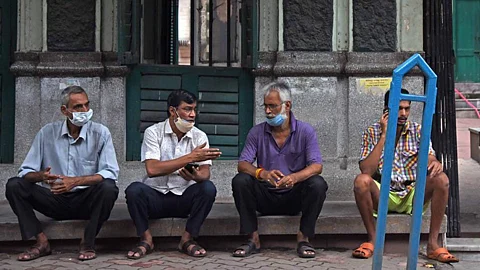
- HOMEGROWN WORLD
- #HGCREATORS
- #HGEXPLORE
- #HGVOICES
- #HGSHOP
- CAREERS
- ABOUT US
- CONTACT US

If you have ever spent any amount of time in Kolkata, especially in the city's older neighbourhoods in the north, you've likely seen groups of men, and sometimes women, both young and old, huddled together in front of old family homes, engaged in animated conversations about anything and everything from pop culture to geopolitics and the going rate of fish and vegetables in the neighbourhood market. These commonplace conversations aren't just small talk or neighbourly hangouts; they are addas — a long-held tradition inseparable from the Bengali life of the mind.
Adda is one of those words that does not have an exact translation in any other language. It is to Kolkata's intellectual life what Socratic dialogues were to Athens in Ancient Greece, salons were to Paris during the Belle Époque, and tertulias were to Buenos Aires in the 1800s. Although adda is now almost synonymous with the rendezvous that would take place at the College Street Coffee House in the late-1800s to late-1900s, adda culture originally emerged and thrived in the 'rowak' or 'rok' of North Kolkata's old family homes.
The term rowak refers to raised platforms in front of old houses, positioned between the street and the home. Once, these platforms played a central role in Kolkatan life, functioning as a kind of third space: not part of the house interior, but not fully public either.
The rowak was a place to sit, rest, observe, and hang out. It supported the rhythm of daily routines. Neighbours paused at rowaks to talk. Children used it as a spot to play. Street vendors stopped to display their merchandise, and elderly residents sat there to watch the street. The rowak encouraged informal meetings and supported the city's adda culture.
In North Kolkata, rowaks were a common feature in bonedi homes built during the colonial period. They were usually made of stone or concrete, running beneath verandahs or Kolkata's iconic louvere window. While plain in form, they enabled a kind of shared social life that crossed household boundaries. A passerby could greet a resident, join in conversation, or stop for a short break. The rowak offered neither complete privacy nor complete exposure. It allowed for connection without invitation.
This idea of the rowak as a shared threshold has parallels elsewhere. In Pondicherry, Madras, and Goa, the thinnai — a raised platform at the entrance of Tamilian homes — served a similar function. Both the rowak and the thinnai were spaces that supported rest, exchange, and informal contact. They were built into the structure of homes, but looked outward to the street. In both cases, architecture supported patterns of social life that did not depend on fixed schedules or formal institutions.
Today, rowaks are an increasingly rare sight. They represent the last vestiges of a fading culture. As old houses are replaced by swanky apartment buildings, these once-ubiquitous platforms are disappearing from Kolkata's streets. Often, even the surviving rowaks are blocked by gates, used for storage, or flattened to make parking spots. This shift reflects changes in how people relate to their neighbourhoods and the public space. Private life has moved indoors and online, and street life has narrowed. The conditions that once gave meaning to rok-baaji or loitering around rowaks have fundamentally changed.
This loss is more than architectural. It signals the erosion of a culture that valued informal, intergenerational exchange in shared space. The rowak embodied a slower Kolkata where leisure, conversation, and observation were not luxuries but part of everyday life. As we reimagine urban spaces for the future, perhaps the rowak, like the thinnai, offers a lesson. In a world increasingly divided between private and public, online and offline, what we need most may be more of these liminal spaces between the home and the world.
